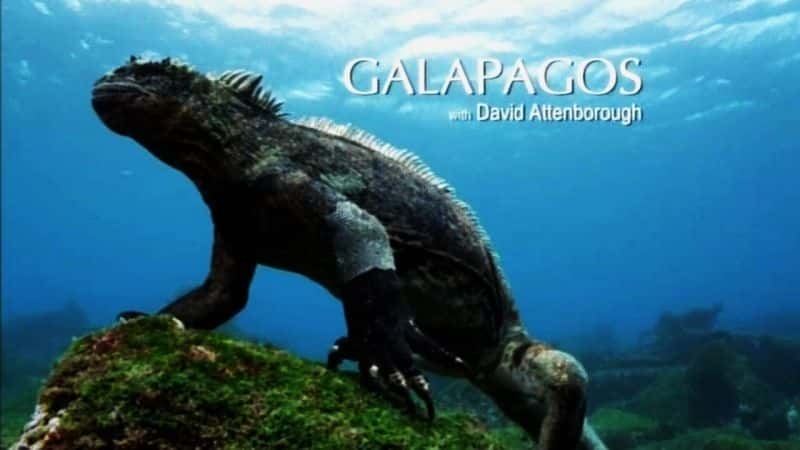
------------------------------------------------------
[BSkyB系列]:加拉帕戈斯(BSkyB)Galapagos (BSkyB)-1080P高清迅雷网盘下载
------------------------------------------------------
由David Attenborough和Jo Unwin主持的自然纪录片,由BSkyB在2013年出版-英语旁白Nature Documentary hosted by David Attenborough and Jo Unwin, published by BSkyB in 2013- English narration
------------------------------------------------------
大卫·阿滕伯勒爵士与加拉帕戈斯先生大卫·阿滕伯勒爵士首次在电影中捕获了一种新的粉红鬣蜥。在关于加拉帕戈斯群岛的新系列节目中,这位经验丰富的广播公司很高兴与查尔斯·达尔文(Charles Darwin)错过的生物面对面。现在,他将使观众对稀有的粉红鬣蜥有了第一印象。它生活在一座火山的顶部,在当今时代,当您想到加拉帕戈斯群岛每平方米的科学家人数时,这是一件了不起的事情,然而突然间,我们发现了一个新物种, 8221;?戴维爵士说。一点长春花或以前没有人发现的东西是一回事,但不仅如此。?您可能会想到,因为这些岛屿在150多年来一直被科学家们称赞过,因此其基础知识已经相当完善,但是他们应该发现一种新的鬣蜥物种是非常不寻常的。新的鬣蜥将出现在加拉帕戈斯群岛的第三集中[编辑]??起源???加拉帕戈斯群岛从四百万年前开始从海洋中爆发。尽管在如此偏远的太平洋前哨地区生活似乎不可行,但由于大火仍在燃烧,首次到来的飞机降落了。大卫·阿滕伯勒(David Attenborough)探寻了这些先驱者衍生的动植物岛:从在这些岩石上暂定立脚点的种子的海鸟,到居住在赤道的企鹅和一只蓝脚的跳舞鸟。这是一个历险历险记,与众不同的人生形态,以及在各种困难中生存的故事。这是一个渐进的熔炉中,任何事情,一切皆有可能的故事。[编辑]???适应???一旦生命抵达加拉帕戈斯群岛,它就会爆炸成独特而壮观的形式。大卫·阿滕伯勒(David Attenborough)研究了这种进化创新背后的驱动力。我们了解到,生活必须能够快速适应这些不断变化的火山景观。它导致了在世界上其他任何地方都找不到的物种,例如可以从鼻中吐出海盐的巨型鲸鲨和海鬣蜥,可以种成树状植物的蒲公英种子,以及可以完美融入黑暗的蜘蛛。到目前为止,适应一直是这些岛屿生存的关键,但是加拉帕戈斯群岛的生活故事并没有到此结束。引发这些生命爆炸的催化剂仍然存在。[编辑]???进化???加拉巴哥群岛中没有两个岛屿是相同的。大陆板块难以察觉的漂移使每个岛都保持生物隔离。大卫·阿滕伯勒(David Attenborough)探索了这种进化的坩埚,遇到了重达半吨的乌龟,使用工具的雀科和通过俯卧撑进行交流的蜥蜴。对于达尔文来说,这完全是他进化论的证据。我们看到了世界闻名的乌龟的最后镜头,这个乌龟被人们称为孤独的乔治,他是该物种的最后一个幸存者。大卫·阿滕伯勒(David Attenborough)是与他合影的最后一个人。达尔文的著名访问有不利的一面。人的到来。大卫调查了我们对这些岛屿的影响,因为我们的影响是一把双刃剑。我们?破坏了自然平衡,但他也相信达尔文会对我们在科学领域取得的进步感到兴奋。我们现在还发现证据表明进化更加有效Galapagos with David AttenboroughSir David Attenborough has captured a new species of pink iguana on film for the first time. In his new series about the Galapagos Islands, the veteran broadcaster was thrilled to come face to face with a creature missed by Charles Darwin. Now he will give viewers their first glimpse of the rare, pink iguana – which lives on top of a volcano “It’s a remarkable thing in this day and age when you think about the number of scientists per square metre in the Galapagos, and yet suddenly we have discovered a new species,” Sir David said. “A little periwinkle or something which nobody has identified before is one thing, but this is more than that. “You would have thought because these islands have been pretty well raked over by scientists for 150 years that the basics would be pretty well established, but that they should discover a new species of iguana is quite extraordinary. The new iguana will feature in the third episode of Galapagos[edit] Origin The islands of the Galapagos rose explosively from the ocean four million years ago. Although life would not seem viable in such a remote Pacific outpost, the first arrivals landed as the fires still burned. David Attenborough explores the islands for the animals and plants that descend from these pioneers: from the sea birds carrying the seeds that made a tentative foothold on these rocks, to equator-dwelling penguins and a dancing bird with blue feet. This is a story of treacherous journeys, life-forms that forged unlikely companionships, and surviving against all odds. It is the story of an evolutionary melting pot in which anything and everything is possible.[edit] Adaptation Once life arrived in the Galapagos, it exploded into unique and spectacular forms. David Attenborough investigates the driving forces behind such evolutionary innovations. We learn that life must be able to adapt quickly in these ever-changing volcanic landscapes. It has resulted in species found nowhere else in the world, such as giant whale sharks and marine iguanas that can spit sea-salt from their noses, dandelion seeds that grow into tree-sized plants and spiders that can blend perfectly into the darkness. Adaptation has been the key to survival in these islands so far, but the story of life in the Galapagos doesn’t end here. The catalyst that triggers these explosions of life remains in place.[edit] Evolution No two islands in the Galapagos are the same. The imperceptible drift of a continental plate keeps each island biologically isolated. David Attenborough explores this evolutionary crucible, encountering tortoises that weigh up to half a tonne, finches that use tools and lizards that communicate using press-ups; for Darwin, this was all evidence for his theory of evolution. We see the final footage of the world famous tortoise fondly known as Lonesome George, the last survivor of his species. David Attenborough was the last person to have ever filmed with him. Darwin’s famous visit had a downside – the arrival of man. David investigates the impact we’ve had in these islands, as our influence is a double-edged sword. We’ve disrupted the natural balance but he also believes Darwin would be thrilled with the advances we have made in science. We’re also now uncovering evidence that evolution is more rapid than Darwin could ever have imagined. Whatever wonders the Galapagos Islands hold today, they are only a hint of what awaits them in the future.[edit] The Making of Making of David Attenborough’s Galapagos, which is aired first, offers an unrivalled and actually far more interesting view of the dramas that went into capturing all that footage. The way all the shots have been so calmly edited together makes the process look so effortless, but nothing could be further from the truth. There are broken helicopters and broken camera cables that threaten the whole enterprise and the grunting of mating tortoises that threaten to drown out Attenborough’s pieces to camera. This making of programme also includes the discovery of a previously unknown species of pink iguana, as well as the final television appearance of the last-remaining member of another species – the iconic long-necked tortoise known as Lonesome George. “He’s about 80 years old and he’s getting a bit creaky in his joints,” whispers Attenborough. “As indeed am I.”
------------------------------------------------------
【技术参数】——
视频编码: x264 CABAC High@L3.1
比特率: 4000 Kbps
Video 画面比例: (16.9)
Video 分辨率: 1280 x 720
音频编码: AAC LC
音频比特率: 160 Kbps AVC 48KHz
Audio 声道数: 2
时长: 45mins
帧速率: 25帧速率
分集数: 4
体积: 1.27 GB
编码器: mp4
编码: Harry65
来源: HDTV【Technical Specs】——
Video Codec: x264 CABAC High@L3.1
Video Bitrate: 4000 Kbps
Video Aspect Ratio: (16.9)
Video Resolution: 1280 x 720
Audio Codec: AAC LC
Audio Bitrate: 160 Kbps AVC 48KHz
Audio Channels: 2
Run-Time: 45mins
Framerate: 25fps
Number of Parts: 4
Part Size: 1.27 GB
Container: mp4
Encoded by: Harry65
Source: HDTV
------------------------------------------------------
相关纪录片:
----------------------------------
Links
Further Information
www.mirror.co.uk
Release Post
MVGroup.org (torrent)
Related Documentaries
Galapagos With Liz Bonnin
Access 360 World Heritage: Galapagos
Lonesome George and the Battle for Galapagos
Galapagos (BBC)
Two Years in Galapagos
Galapagos: Beyond Darwin
The Dragons of Galapagos
The Genius of Charles Darwin
Evolve
------------------------------------------------------
本片字幕下载-(纪录片部落:www.xitongle.com)
-----------------------------------
本片字幕下载-(纪录片部落:www.xitongle.com)
-----------------------------------
本片字幕下载-(纪录片部落:www.xitongle.com)
-----------------------------------
本片字幕下载-(纪录片部落:www.xitongle.com)
-----------------------------------
本片字幕下载-(纪录片部落:www.xitongle.com)
-----------------------------------
本片字幕下载-(纪录片部落:www.xitongle.com)
-----------------------------------
------------------------------------------------------
纪录片部落下载地址:
|